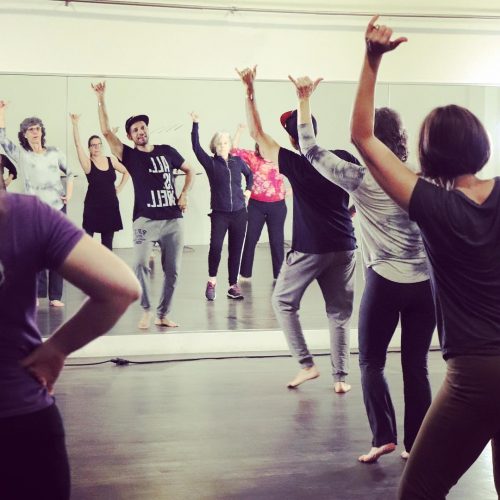This content was published: May 28, 2019. Phone numbers, email addresses, and other information may have changed.
Dance Courses offered by PCC Community Education
PCC Community Ed
The Worm – Gangnam Style – Flossing – Macarena – the weird contortions Billy Ray Cyrus did while singing Achy Breaky Heart – whatever your flavor of movement – just embrace it! Dance is an integral part of our lives, and a valuable form of self-expression and communication. You can find dance integrated in almost every area of our lives – in the media, at social gatherings, in formal settings, at the gym – during inappropriate moments at the office. Dancing gets the heart pumping, but is also great for socializing. People use dance to relieve stress and tension, expel energy or, in some cases, just to relax and feel better. From small children to adults, there’s a reason why dance makes a difference – explore all of the dance courses offered by PCC.
Do you wanna dance?
Dance, Dance Evolution
Far before the creation of the first modern civilization, dance served as an irreplaceable way of expressing human thought and emotion. As our civilization traveled through time, dance has been modified to the point of being popular means of expression, health, communication and competition. More specifically, dance has been used for social gatherings, exercise, religious purposes, storytelling and much more.
Different Types of Dance (at PCC)
Ballroom
Ballroom started with the rise of the European renaissance in the 16th century and expanded across the world, helping create many of the popular dances used today. Some of these dances include foxtrot, waltz, cha cha and rumba.
Waltz
This dance first appeared in the ballrooms of Venice, moving from folk roots to royal ballrooms. The waltz helped kickstart a new era of social dances and music styles.
Salsa
Derived from Cuba, this Latin American dance managed to revolutionize the way we dance and move on the dance floor. The movements of salsa are a combination of various dances, including cha-cha-cha, Mamba, Rumba and the Danzón.
Ballet
This formal dance technique combines costumes, scenery and music. At first, its role was just a component of the opera, but it has evolved to integrate dance, music, stage design and poetry to make a dramatic storyline.
Benefits
Dancing is a great way to burn off some extra calories. There are a wide range of physical and mental benefits.
1. Physical Benefits
When you “cut a rug,” you can burn more 300 calories every half-hour, according to a report from the University of Brighton. That meets or exceeds the amount of energy you burn during an easy run or swim. Additionally, even relatively tame forms of dance burn about the same number of calories as cycling.
Dancing also increases the flexibility and balance of muscles, increasing muscular strength, endurance and motor fitness, which provides better coordination and agility and improved spatial awareness. It also promotes stronger bones and a reduced risk of osteoporosis, improves the condition of the heart and lungs, and increases energy. If you’re looking to lose or management your weight, dancing gets it done while you’re having fun.
2. Mental Health
Dance can be used to support your mental health as well. A recent research article published by Frontiers in Aging Neuroscience linked dancing to improved “white matter” integrity in the brains of older adults, which impact cognitive functions such as memory and processing speed. Additionally, research dating back to the 1980’s supports the idea that dancing can also curb anxiety, reduce stress and diminish depression, resulting in improved general and psychological well-being, plus higher levels confidence and self-esteem. Are you ready to see how dance can help bring joy to your life? Sign up for a class at Portland Community College and learn more about your favorite dance today.
Need we say more?

